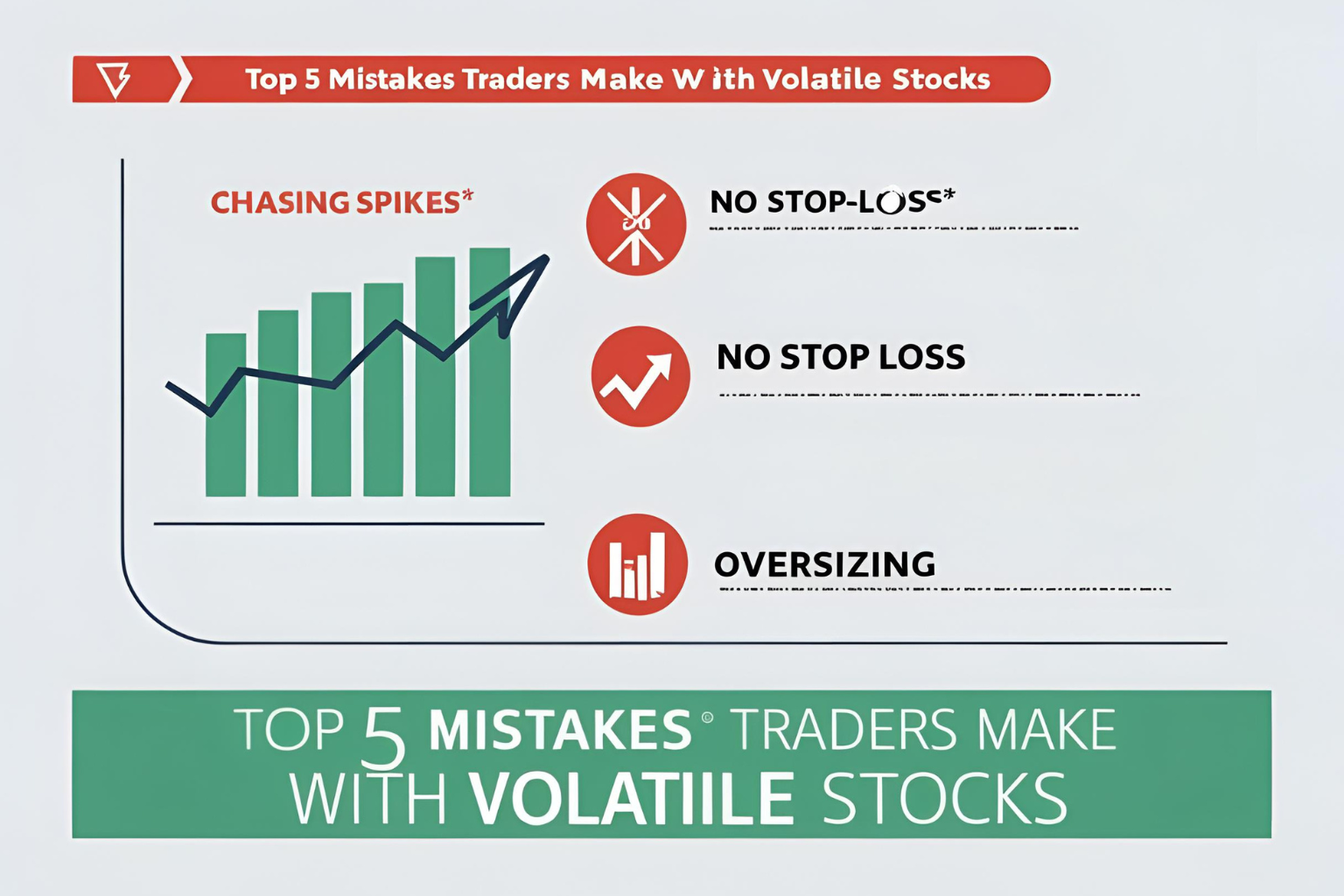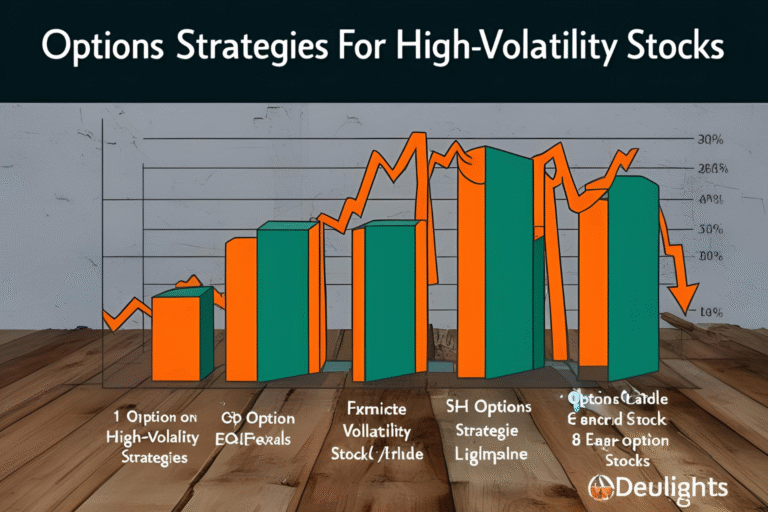Top 5 Mistakes Traders Make with Volatile Stocks
Volatile stocks offer fast price movement and big profit potential—but they also bring higher risk and emotional pressure. Traders are drawn to these stocks for the opportunity, but without the right mindset and execution, volatile stocks can lead to fast losses.
In this guide, we highlight the top 5 mistakes traders make when trading volatile stocks—and how to avoid them to protect your capital and stay in the game longer.
1. Chasing Price After the Move
The mistake:
Jumping into a trade after a stock has already made a big move—often near the top or bottom.
Why it’s dangerous:
- High risk of buying into exhaustion or reversal
- Emotional entry based on FOMO
- No clear risk/reward setup
How to avoid it:
- Wait for pullbacks or consolidations before entering
- Use technical levels and volume confirmation
- Have a clear entry plan, not a reactive mindset
2. Using Oversized Position Sizes
The mistake:
Taking a large position in a highly volatile stock to maximize gains—without considering the downside.
Why it’s dangerous:
- A small move against you can wipe out a significant portion of your account
- Leverage or options can multiply losses
- Leads to panic-selling or holding through drawdowns
How to avoid it:
- Size your position based on dollar risk, not excitement
- Use a fixed % of account risk per trade (e.g., 1–2%)
- Lower size = better control = clearer decisions
3. Ignoring Risk Management
The mistake:
Trading volatile stocks without stop-losses or exit plans.
Why it’s dangerous:
- Volatile stocks can reverse in seconds
- Emotional decision-making increases without pre-defined risk
- One bad trade can ruin multiple good trades
How to avoid it:
- Use hard stop-loss orders or mental stops with discipline
- Always define your maximum loss before entering
- Journal your risk decisions to stay consistent
4. Overtrading During High Volatility
The mistake:
Taking too many trades in a short time due to market excitement or perceived opportunity.
Why it’s dangerous:
- Leads to fatigue and emotional burnout
- Increases commission/slippage costs
- Often involves low-quality setups
How to avoid it:
- Set a daily trade limit (e.g., 3–5 trades/day)
- Only trade setups that meet your criteria
- Track overtrading in your trading journal
5. Trading Without a Plan
The mistake:
Entering volatile stocks without a structured game plan.
Why it’s dangerous:
- You’re reacting to price, not executing a strategy
- No defined entry, target, or stop
- Leads to inconsistent results and emotional stress
How to avoid it:
- Write down your trade plan before entry
- Know your entry trigger, stop-loss, and target zones
- Stick to a repeatable process, not instincts
Quick Recap
| Mistake | How to Fix It |
|---|---|
| Chasing after big moves | Wait for pullbacks or range breaks |
| Oversizing trades | Use consistent % risk-based sizing |
| Ignoring risk management | Always define stop-loss and exit strategy |
| Overtrading | Set daily trade limits and avoid FOMO setups |
| Trading without a plan | Use a checklist for every trade |
FAQs
Can you trade volatile stocks safely?
Yes—with defined risk, position control, and a consistent strategy.
Is high volatility always a good trading opportunity?
Not always. Volatility without direction or liquidity can be dangerous.
What tools help manage these mistakes?
Use trading journals, volatility filters, real-time alerts, and backtested setups.
Should beginners trade volatile stocks?
Only after learning proper risk management. Start small and focus on discipline.
What’s a good volatility level to look for?
Look for stocks with daily moves of 4%+ and average volume over 1M shares.




